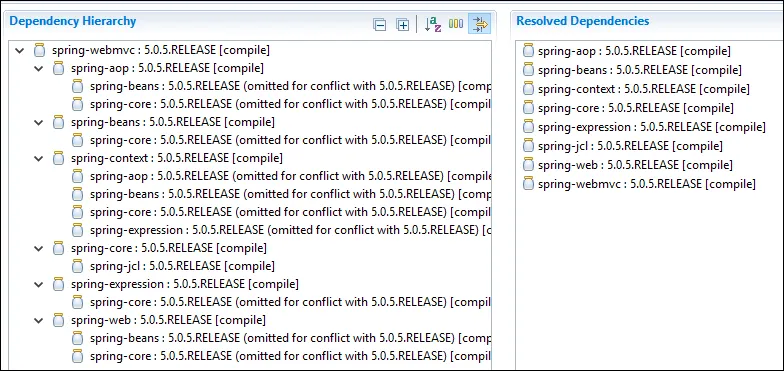我正尝试使用Spring 3.0和Maven完成我的第一个项目。我之前在很多项目中使用过Spring 2.5(以及较早版本)。然而,我有点困惑,应该在pom.xml文件中定义哪些模块作为依赖项。我只想使用核心容器功能(beans、core、context、el)。
我通常会这样做:
<dependency>
<groupId>org.springframework</groupId>
<artifactId>spring</artifactId>
<version>2.5.6</version>
</dependency>
但是现在我有点困惑,因为3.0版本中没有完全打包的spring模块了。我尝试了以下方法,但它没有起作用(一些类丢失了)。
<dependency>
<groupId>org.springframework</groupId>
<artifactId>spring-core</artifactId>
<version>3.0.0.RELEASE</version>
</dependency>
<dependency>
<groupId>org.springframework</groupId>
<artifactId>spring-expression</artifactId>
<version>3.0.0.RELEASE</version>
</dependency>
<dependency>
<groupId>org.springframework</groupId>
<artifactId>spring-beans</artifactId>
<version>3.0.0.RELEASE</version>
</dependency>
<dependency>
<groupId>org.springframework</groupId>
<artifactId>spring-context</artifactId>
<version>3.0.0.RELEASE</version>
</dependency>
希望能得到任何帮助!

